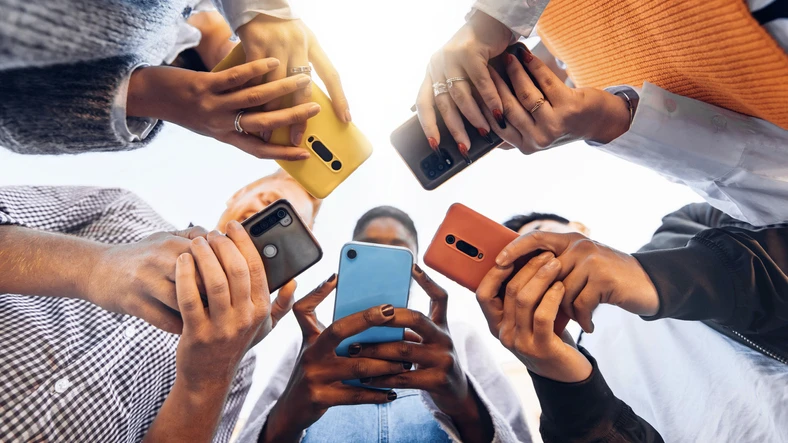If you’re glued to your smartphone or laptop for much of your day, you’re not alone. A recent study revealed that people ages 16 to 64 spend an eye-popping 6 hours and 37 minutes per day on their devices. Since this is equivalent to 44% of a person’s waking hours, many mental health experts recommend a digital detox as a form of self-care that provides an opportunity for you to develop a healthier relationship with technology.
The Downside of Constant Connectivity
Being constantly connected to digital devices can have several negative impacts on your mental health—especially when you’re already dealing with the effects of a substance use disorder.
- Increased stress and anxiety. A constant stream of notifications, emails, and messages can easily become overwhelming. The pressure to respond promptly and stay updated can contribute to anxiety and a feeling of being constantly “on.”
- Disrupted sleep patterns. Exposure to screens, particularly before bedtime, can interfere with your ability to get the rest your body needs. The blue light emitted by screens suppresses melatonin production, making it more difficult to fall asleep and negatively affecting your quality of sleep.
- Comparison. Social media platforms often showcase curated, idealized versions of people’s lives. Constant exposure to these images can lead to a sense of inadequacy. Instead of celebrating your own strengths and the progress you’re making in your recovery journey, you might start to question whether you’re doing enough.
- Reduced attention span. Constant multitasking and frequent switching between digital tasks can contribute to a shortened attention span. This can make it challenging to focus on one task for an extended period and increase your frustration when your recovery efforts don’t seem to be moving fast enough.
- Increase in sedentary behavior. Staying physically active is a great way to naturally boost your mood, reduce your stress levels, and keep cravings in check, but technology use promotes a much more sedentary lifestyle.
- Social isolation. Paradoxically, excessive use of smartphones and other digital devices can lead to social isolation. Time spent scrolling or posting your own status updates takes away from time spent connecting with friends and family on a deeper level.
- Impaired face-to-face communication skills. Over time, an excessive reliance on digital communication can erode your in-person communication skills. This can impact the development of meaningful relationships and contribute to feelings of loneliness.
- Digital addiction. Addictions don’t always need to involve substances. Excessive use of digital devices, especially social media, can lead to a behavioral addiction that causes many of the same negative effects on your well-being that you struggled with when you were actively using drugs and alcohol.
A Digital Detox Gives You a Chance to Develop a Healthier Relationship With Technology
Obviously, it’s not realistic to expect you to give up on screens altogether. Your smartphone lets you take pictures of moments that make you smile and provides a convenient way to juggle the hectic schedules of everyone in your household. Social media sites make it easier to stay in touch with friends and family who live too far away to visit regularly. Responding to emails and text messages is often a vital part of being a busy working professional. That being said, taking time to step back from your devices—even when it’s temporary—forces you to think more critically about the role technology plays in your life.
Tips to Help You Plan a Successful Digital Detox
Does the thought of stepping away from your devices fill you with dread? Here are a few tips to ensure a more successful detox experience:
- Set clear goals. Define the purpose of your digital detox. Whether it’s reducing stress, improving sleep, fostering better relationships, or gaining clarity of mind, having clear goals will guide your detox and keep you motivated throughout the experience.
- Start small. A digital detox could be for a weekend, a week, or even longer. Make sure the timeframe is realistic and aligns with your goals. A shorter detox is a great starting point if you feel like you’re currently tied to your devices 24/7.
- Set auto-responses for important communications. If applicable, set auto-responses for emails and messages to inform others that you’re on a digital detox. This manages expectations and reduces the pressure you’d normally feel to respond immediately.
- Plan fun screen-free activities for yourself. Prepare a list of alternative activities to fill the time you would typically spend on your devices. This could include reading a new book, getting some fresh air outside, engaging in your favorite creative hobby, or spending quality time with your loved ones. Having planned activities helps reduce the temptation to revert to your old digital habits.
- Establish a relaxing environment. Create a calm and distraction-free environment to enhance the benefits of your digital detox. Consider decluttering your physical space and incorporating relaxation techniques such as meditation or yoga.
- Reflect on your experience. Take time to reflect on your experience throughout the digital detox. Then, use the insights gained from your digital detox to make conscious decisions about your digital habits moving forward.
We’re Here to Provide the Help You Need to Be Successful in Your Recovery Journey
At St. Joseph Institute, we believe that a lasting recovery is about more than simply abstaining from the use of drugs and alcohol. It’s about developing a wellness-focused lifestyle that heals your mind, body, and spirit—and our Pennsylvania residential substance abuse treatment center offers the tools you need to build the future you deserve. Contact us today to learn more.


